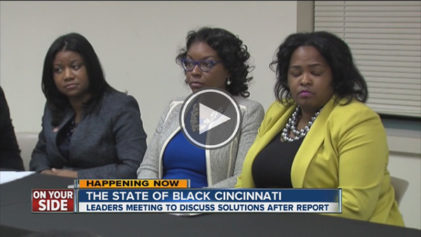While new data released by the Department of Education’s Office for Civil Rights revealed that Black and Latino students are more likely than white students to be suspended, which has been widely known, the data also showed that students of color have far less access to rigorous math and science classes— which could have a dramatic effect on their higher education and learning potential.
In addition, Black and Latino students are more likely to be taught by lower-paid teachers with less experience, according to the first analysis in nearly 15 years of information from all of the country’s 97,000 public schools.
The findings include data showing:
*Black students are suspended and expelled at three times the rate of white students.
*A quarter of high schools with the highest percentage of Black and Latino students do not offer any Algebra II courses, while a third of those schools do not have any chemistry classes.
*Black students are more than four times as likely as white students — and Latino students are twice as likely — to attend schools where one out of every five teachers does not meet all state teaching requirements.
“Here we are, 60 years after Brown v. Board of Education, and the data altogether still show a picture of gross inequity in educational opportunity,” Daniel J. Losen, director of the Center for Civil Rights Remedies at the University of California at Los Angeles Civil Rights Project, told the New York Times.
The disparities occur from prekindergarten all the way up through high school—and call into question whether the $14.4 billion a year in Title I funds that the federal government spends every year to help disadvantaged students, along with other federal initiatives, is having an effect.
“This data collection shines a clear, unbiased light on places that are delivering on the promise of an equal education for every child and places where the largest gaps remain,” said U.S. Secretary of Education Arne Duncan in a statement. “In all, it is clear that the United States has a great distance to go to meet our goal of providing opportunities for every student to succeed.”
“It’s clear that there are big gaps and that we need to do more to focus on high-need populations,” James Brown, the executive director of the STEM Education Coalition, a Washington-based advocacy group, said in response to the math and science data. “But we’re starting to get better and better data on where those gaps are and are figuring out where to really focus energy for college success.”
Brown said better accountability systems that incorporate science achievement into school ratings could help.
“When talking to groups that deal closely with minority populations, this is a big concern, because accountability systems are what drive student achievement and rigor in most high-need populations,” he said.
There were also gaps unveiled in gifted-and-talented education. Black and Latino students only represented 26 percent of students enrolled in those programs, yet made up 40 percent of overall enrollment in schools offering those programs. In high school, while Blacks and Latinos made up 37 percent of students in high schools, they accounted for just 27 percent of students enrolled in at least one AP course.
“We want to have a situation in which students of color — and every student — has the opportunity and access that will get them into any kind of STEM career that takes their fancy,” said Claus von Zastrow, director of research for Change the Equation, a nonprofit that advocates improved science, technology, engineering and math education, or STEM, in the United States. “We’re finding that in fact a huge percentage of primarily students of color, but of all students, don’t even have the opportunity to take those courses. Those are gateways that are closed to them.”


